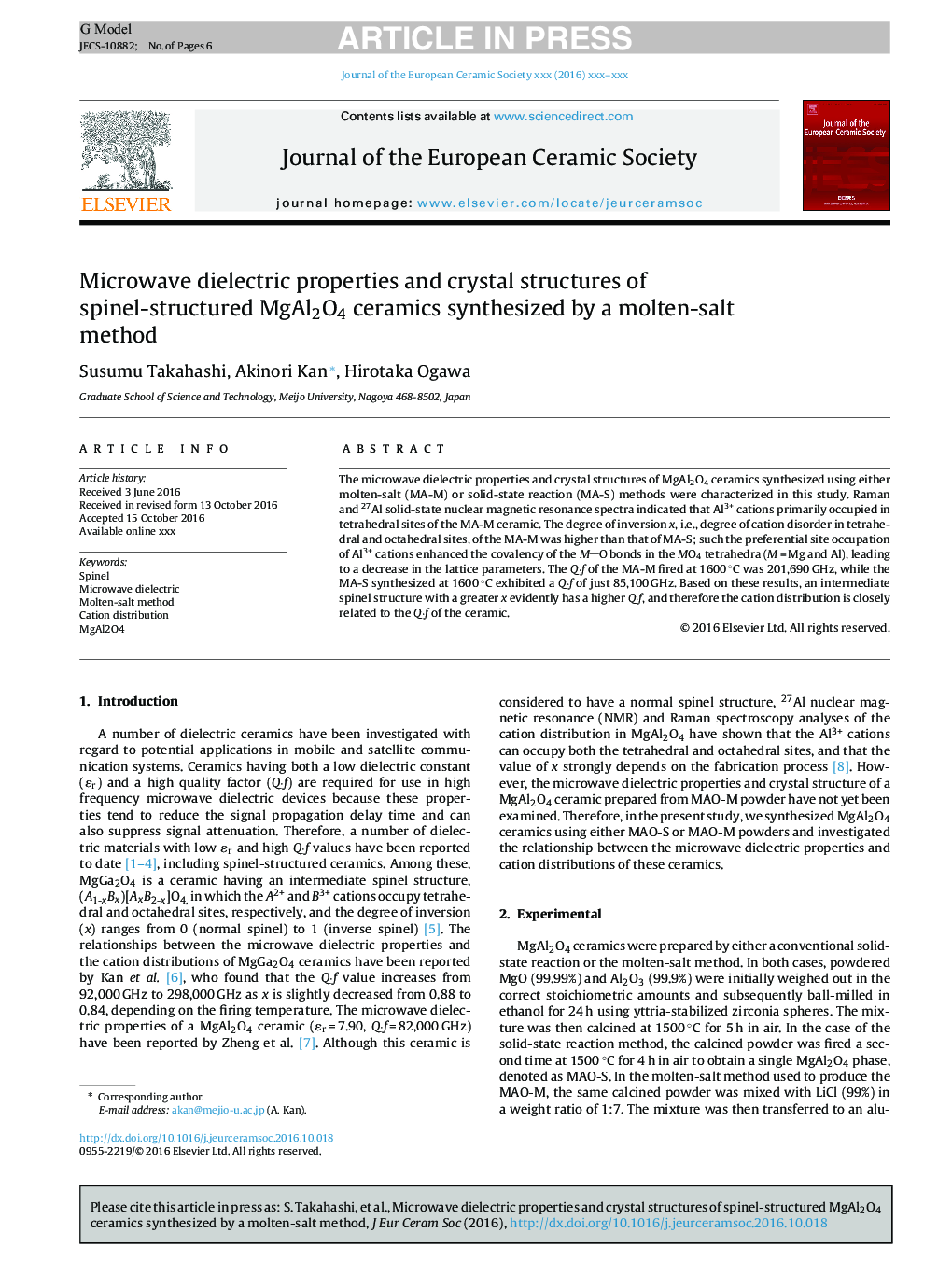| Article ID | Journal | Published Year | Pages | File Type |
|---|---|---|---|---|
| 5440618 | Journal of the European Ceramic Society | 2017 | 6 Pages |
Abstract
The microwave dielectric properties and crystal structures of MgAl2O4 ceramics synthesized using either molten-salt (MA-M) or solid-state reaction (MA-S) methods were characterized in this study. Raman and 27Al solid-state nuclear magnetic resonance spectra indicated that Al3+ cations primarily occupied in tetrahedral sites of the MA-M ceramic. The degree of inversion x, i.e., degree of cation disorder in tetrahedral and octahedral sites, of the MA-M was higher than that of MA-S; such the preferential site occupation of Al3+ cations enhanced the covalency of the MO bonds in the MO4 tetrahedra (M = Mg and Al), leading to a decrease in the lattice parameters. The Q·f of the MA-M fired at 1600 °C was 201,690 GHz, while the MA-S synthesized at 1600 °C exhibited a Q·f of just 85,100 GHz. Based on these results, an intermediate spinel structure with a greater x evidently has a higher Q·f, and therefore the cation distribution is closely related to the Q·f of the ceramic.
Related Topics
Physical Sciences and Engineering
Materials Science
Ceramics and Composites
Authors
Susumu Takahashi, Akinori Kan, Hirotaka Ogawa,
